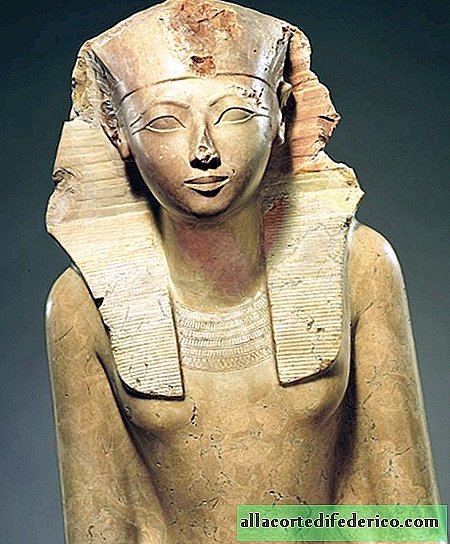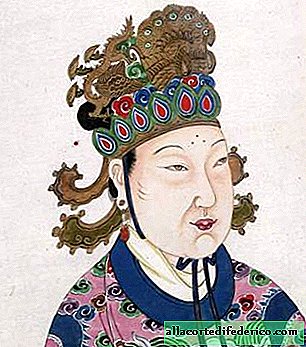When power is a woman’s business: outstanding women monarchs in history
Power was traditionally inherited from father to son, and the presence of heir sons was a prerequisite for the continued existence of the ruling dynasty. But there have been cases in the history of different states when women appeared on the throne, who were remembered as strong and wise rulers who did much to strengthen and prosper their countries. Today we talk about the outstanding women monarchs.
Hatshepsut, Ancient Egypt

Woman-pharaoh - Hatshepsut, the ruler of Ancient Egypt from the XVIII dynasty, wore such a title. After the death of her husband Pharaoh Thutmose II, Hatshepsut became regent with the twelve-year-old heir to Thutmose III. But with the support of priests and other representatives of the upper strata of ancient Egyptian society, Hatshepsut was elevated to the throne. She went down in history as a Pharaoh woman, in whom Egypt recovered from the devastating invasion of the Hyksos. When it was built many temples and palaces, and also made a voyage to the country of Punt. The Egyptian army made a number of successful military campaigns and strengthened the borders of the state.
Wu Zetian, China

Wu Zetian (624 - 705) ruled China for 40 years. She was on the throne after the death of her husband, Emperor Tai Zong. At first she was a regent with the young heirs, and then she was declared emperor and concentrated all power in her hands. Under Wu Zetian, the country made a number of successful military campaigns and annexed new territories in the north and west. She promoted the spread of Buddhism and Taoism, and also patronized the arts and encouraged the construction of temples.
Queen Tamara, Georgia

Queen Tamara (1166 - 1213) was crowned during the lifetime of her father, King of Georgia George III, since he had no other heirs and this caused public discontent. After the death of her father, Tamara was re-crowned, and the time of her reign went down in the history of the country as the "Golden Age of Georgia". Under her, several successful military campaigns were made that strengthened the country's position. Queen Tamara also contributed to the spread of Christianity, the construction of temples and monasteries.
Catherine de Medici, France

Formally, Catherine de Medici (1519 - 1589) was not crowned the sole ruler of France, but she was regent with her young sons, and also had a great influence on them during their reign. In fact, during the reign of her sons, it was she who led the country. Despite the fact that the country was in a difficult situation during this period, and constant civil and religious conflicts threatened to lead to the collapse of the state, Catherine de Medici managed to maintain the power and integrity of France.
Elizabeth I, England and Ireland

Elizabeth I Tudor (1533 - 1603) ruled England and Ireland from 1558 to 1603. She ascended the throne after the death of her father Henry VIII, brother and sister, due to the fact that the king did not have other heirs. The reign of Elizabeth, who never married and left no heirs, is called the golden age of England. She patronized art and significantly strengthened the country's military power. During the reign of Elizabeth I, England became the mistress of the seas.
Elizaveta Petrovna, Russian Empire

Elizaveta Petrovna (1709 - 1762) was the daughter of Peter I and was on the throne as a result of a coup. The reign of Elizabeth Petrovna went down in history as the Enlightenment. In general, she continued the policy of her father, was engaged in a lot of architectural transformations and led successful military campaigns.
Catherine II the Great, Russian Empire

Catherine II the Great (1729 - 1796) was the wife of the Russian emperor Peter III, who was overthrown as a result of a palace coup. After his death, Catherine II ascended the throne. During her reign, the Russian Empire significantly expanded its borders south and west. The empress patronized culture and art, and also corresponded with the famous enlighteners of Europe.
Queen Victoria, UK and Ireland

Queen Victoria (1819 - 1901) was on the throne at the age of 18, after her uncle, King William IV, died, and there were no other male heirs. The period of her reign, which lasted 63 years, went down in history as the Victorian era. It was the heyday of culture, science and industrial progress.
Empress Tse Xi, China

Empress Tsy Xi (1835 - 1908) from the Qing Dynasty ruled China from 1861 until the end of her days. After the death of her husband, Emperor Yizhu, she became regent with the young heirs. But Tsy Xi soon removed her rightful heirs from power and began to rule alone. Despite such an unsightly way of coming to power, the empress did a lot for the prosperity of the country. With her, China seemed to have freed itself from the shackles of the Middle Ages, industry, infrastructure, medicine and foreign trade began to develop. It was Tsi Xi who abolished the cruel Chinese custom of bandaging the feet, which was practiced in the country among women.
Elizabeth II, UK

Elizabeth II holds the record for the length of stay on the throne among female monarchs. She ascended the throne in 1952 after the death of her father, King George VI. The reign of Elizabeth II was not the easiest time in the history of Great Britain. The country lost most of its colonial lands, but managed to maintain its influence in these countries through the formation of the Commonwealth of Nations. Despite all the difficulties experienced by the monarchical houses of Europe, the authority of Queen Elizabeth II remains at its highest.

















